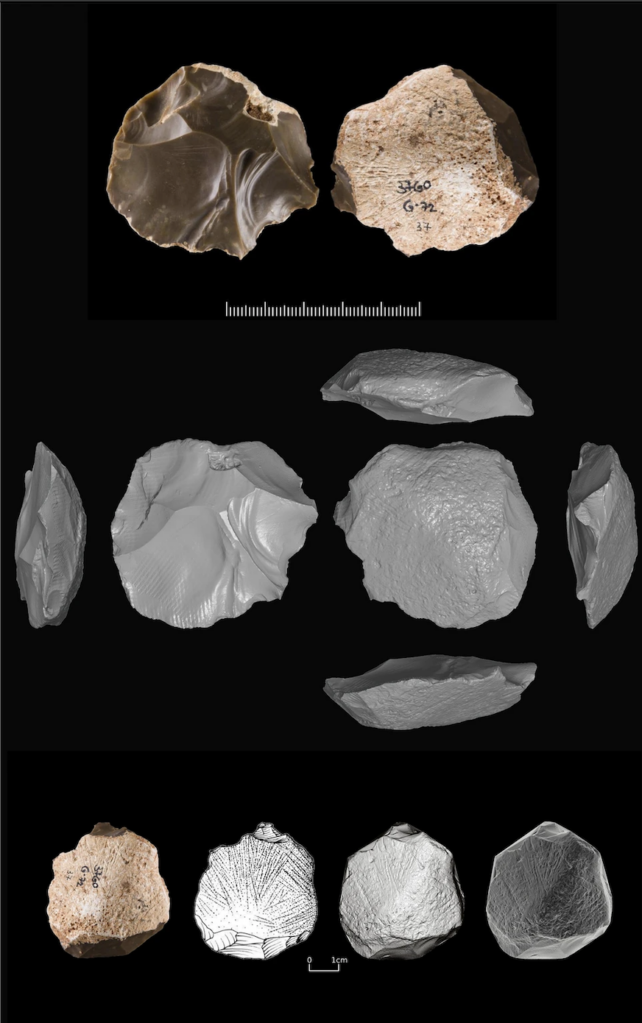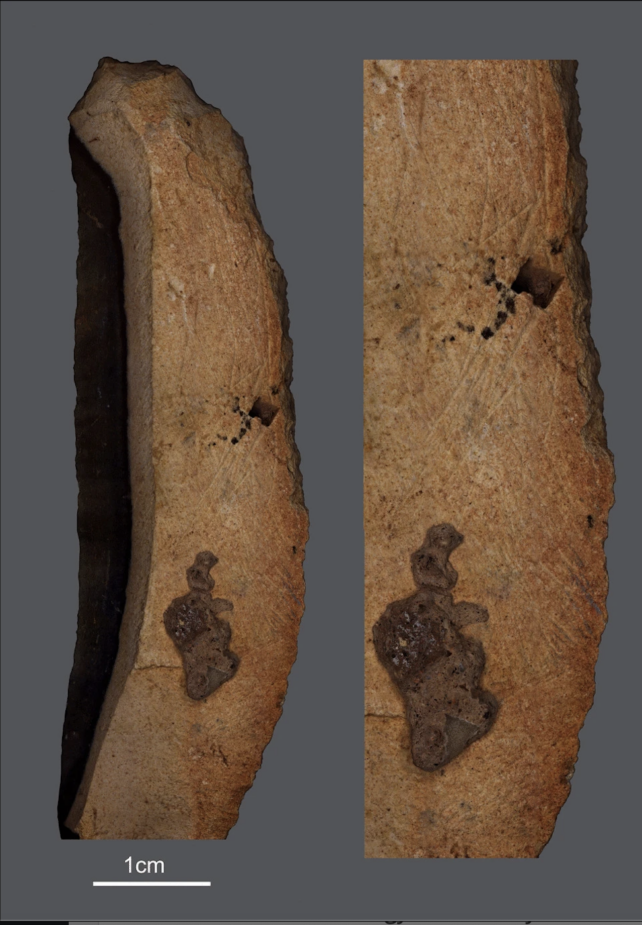
The intricate patterns and notches on certain ancient human artifacts are more than just decorative features, as suggested by some archaeologists. These markings could represent some of the earliest evidence of imaginative thinking and symbolic reasoning in our ancestors skilled in stone toolmaking.
A fresh study conducted by a team from the Hebrew University of Jerusalem has uncovered that numerous ancient artifacts from the Levant region, dating back 50,000 to 100,000 years, were crafted with subtle yet “intentional engravings.”
Currently, the Levant area serves as the land bridge connecting Africa to Eurasia, making it a pivotal exit point for our ancestors thousands of years ago. It marks the beginning of our evolution in tool-making, but these artifacts may hold significance beyond mere functionality.
Under microscopic examination, researchers at the Hebrew University observed that certain Levantine stone implements exhibit distinct geometric designs. Contrary to earlier assertions by other scholars, these lines signify more than random marks; they reflect deliberate planning and purpose.
Among the analyzed tools, two were created employing the Levallois knapping technique, characteristic of the Levant Stone Age, which involves flaking a flint stone core to create sharp cutting edges. One of these tools originates from the Middle Paleolithic period, while the other dates back 100,000 years.
Similar to artistic seashells and ochre pigment, as well as other engraved objects crafted from stone, bone, or ostrich eggs, these designs might signify symbolic human behavior that transcends basic utility — a fundamental intersection between aesthetics and utility.
Historically, some experts have interpreted the markings on these Levantine tools as “proto-aesthetic“, suggesting they were sculpted for their pleasing visual arrangements rather than for symbolic reasons.
While it is challenging, if not impossible, to ascertain the motivations of individuals from tens of thousands of years ago, the authors of this recent study believe there is a deeper narrative beyond mere visual appeal.
“Abstract thinking is a key element of human cognitive evolution,” states archaeologist and lead author Mae Goder-Goldberger.
“The purposeful engravings observed on these artifacts demonstrate the capacity for symbolic expression and imply a society with advanced conceptual skills.”

The research team’s findings are based on an in-depth analysis of stone flint cores alongside other ancient artifacts from the Levant region.
The two flint cores examined by Goder-Goldberger and her colleagues are remarkable compared to other artifacts from the Levant due to their engraved surfaces, featuring elaborate, radiating lines.
In contrast, a blade from Amud Cave, constructed over 55,000 years ago, does not exhibit evenly spaced incisions or a coherent pattern.

The geometric engravings on the Levant tools are concentrated in specific “areas of interest” and some are overlapped by flake removals, suggesting they were created before the final flaking stage, rather than after the tool had been utilized.
Another artifact, a plaquette from the Levantine, analyzed for its lack of known utility, was produced around 54,000 years ago and displays similar geometric patterns akin to the Levant core tools.

Considering the similarities among the stone artifacts from all three sites in the Levant, Goder-Goldberger and her team propose that these engravings were developed with “sharp-edged non-retouched tools (likely stone implements) using a single stroke for each incision.” This method, they argue, implies “intention and creativity.”
If the researchers’ assertions hold true, the creation of these stone tools may have been motivated by reasons extending beyond mere survival and resource management, reflecting deeper cognitive and cultural aspects of our ancestors’ lives.
“The methodology we utilized not only emphasizes the purposeful nature of these engravings,” remarks archaeologist João Marreiros from the Leibniz Centre for Archaeology in Germany, “but also establishes, for the first time, a comparative framework for evaluating similar artifacts, thereby enhancing our understanding of Middle Paleolithic communities.”
This significant study is published in Archaeological and Anthropological Sciences.









